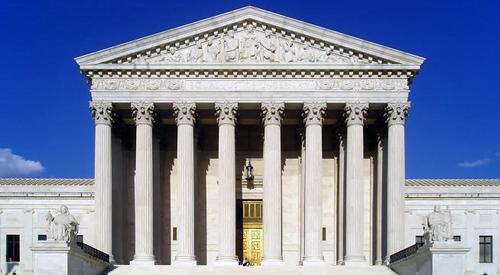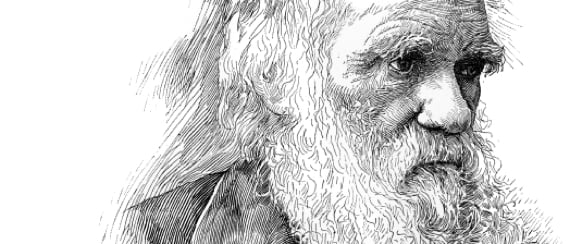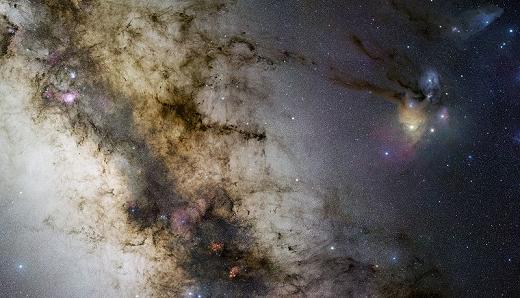Every Friday, “Science and the Sacred” features an essay
from a guest voice in the science and religion dialogue. This week’s
guest entry was written by David Opderbeck. Opderbeck is a professor of
law at Seton Hall University School of Law and serves in the school’s
Gibbons Institute of Law, Science & Technology. His blog Through a Glass Darkly addresses issues in theology and the science and religion dialogue. This is a follow-up to his post “In Defense of Dover”.
This post will discuss how the law interacts with “science.” The interaction of law and science is a vast and fascinating topic. I can mention here only some brief highlights of a handful of the important issues. As part of this discussion, I’ll offer some thoughts about Judge Jones’ treatment of “science” in the Kitzmiller v. Dover Area School District intelligent design case. At the end of the post, I’ll suggest some resources for further reading on the relationship between law and science.
The Gatekeeper Function
One of the most significant ways in which law and science relate is in the use of “expert” testimony. Federal Rule of Evidence (“FRE”) 702 states that
If scientific, technical, or other specialized knowledge will assist the trier of fact to understand the evidence or to determine a fact in issue, a witness qualified as an expert by knowledge, skill, experience, training, or education, may testify thereto in the form of an opinion or otherwise. . . .
For example, in a product liability case, engineering experts might testify as to the soundness of the design of the product at issue, and medical experts might testify as to the nature and extent of the plaintiff’s injuries.
When a party seeks to introduce expert testimony, the court must serve as a “gatekeeper” over what can be presented to the jury. According to FRE 702, when the court exercises this gatekeeper function, it must ensure that “(1) the testimony is based upon sufficient facts or data, (2) the testimony is the product of reliable principles and methods, and (3) the witness has applied the principles and methods reliably to the facts of the case.” These criteria were grafted into the FRE as a result of the Supreme Court’s opinions in Daubert v. Merrill Dow Pharmaceuticals and Kuhmo Tire v. Carmichael, in which the Court discussed the gatekeeping functions of trial courts with respect to expert testimony.
The Daubert standard represents both a pragmatic and an epistemological limitation on the adversarial trial process. The scope and propriety of this limitation has been hotly debated among legal scholars, lawyers and judges. It seems clear, however, that there must be some limits on what can count as “expert” testimony, and that the trial courts, in their traditional role as evidentiary gatekeepers, must to some extent determine what can be presented to juries as “scientific” evidence. We lack the judicial and social resources to turn every trial into a perfect search for the truth. The best we can do is come as close as possible to the truth as the time, cost and functional limitations of the judicial system can accommodate. This means there must be some limits on what testimony can be presented under the “expert” umbrella.
Gatekeeping and Kitzmiller
Supporters of Judge Jones’ approach in the Kitzmiller case suggest that a similar gatekeeping function is important with respect to public education. Without some demarcation of what can be taught as “science” in the public schools, aren’t we opening the floodgates to the teaching of all sorts of pseudo-science, such as astrology and young earth creationism? I think this is a valid concern. For this and other reasons, I personally don’t agree with the “teach the controversy” approach promoted by many ID advocates. If I were to serve on my local school board, I would not vote in favor of introducing ID materials into the science curriculum, primarily because I don’t believe the ID program has generated sufficient results to reach the public schools. Like the courts, the public schools lack the time and resources to address views that fall far outside the scientific mainstream.
In my view, however, when the issue is the local public school curriculum, the political level at which such resource allocation decisions should be made ordinarily is that of the local school board, in conversation with the academic community and under the broad oversight of state and national standards-setting bodies. The judicial scientific gatekeeping role usually should relate only to traditional judicial functions, such as what sorts of evidence can be considered by juries.
What if a local school board gets a curricular decision “wrong” and there is no improper religious purpose or other illegality? In my view, that concern ordinarily should be addressed through the process of open debate and political action. The reality is that local political bodies sometimes make “bad” decisions that are not unlawful or unconstitutional. The possibility of bad local decisions is one of the costs of democratic governance. It’s a cost that usually is mitigated by the self-correcting processes of democracy. Concerned parents remain free to elect new local officials.
In the relatively rare circumstances in which the local political body acts for clearly improper religious purposes (such as the Kitzmiller case and the McLean v. Arkansas Board of Education and Edwards v. Aguillard cases), the courts can remedy those actions under the establishment clause of the first amendment to the Constitution. The primary inquiry in such cases, however, is not to ask if it is “science”, Even if this demarcation question could be answered definitively in a philosophical sense (which I believe is doubtful at best), this still would not necessarily resolve whether the governmental decision involved an improper religious purpose or entanglement.
“Science” and “religion” use different methodological tools and varying rules of discourse, but both disciplines inquire into the same ultimate reality. It is therefore entirely possible for interdisciplinary approaches to exist that are neither purely “science” nor purely “religion.” In fact, much of today’s serious faith-and-science scholarship relies on this notion of interdisciplinarity. (For a discussion of this notion, see Alister McGrath, A Scientific Theology: Reality (Eerdmans 2002)). There is nothing facially unconstitutional about exploring such interdisciplinary approaches in a public educational setting.
This leads to my primary criticism of the Kitzmiller decision. I don’t believe Judge Jones should have ventured a broad definition of “science” in the Kitzmiller case, as though such an exercise necessarily ends the discussion of constitutionality. Under the applicable standards for establishment clause cases, the proper inquiry is into purposes and effects: was the government’s purpose “secular” and was the primary effect of the government’s decision to advance or inhibit religion or to produce an excessive entanglement of government and religion? Whether an idea is labeled “religion” or “science,” in itself, is irrelevant to the constitutional question. “Religion” is a constitutionally proper subject of study in the public schools, provided that the purpose and effect of that study is not sectarian.
Rather than wading into the deep waters of defining “science” over against “religion,” then, Judge Jones should have focused primarily on the purposes of the Dover school board, which clearly were to proselytize for a particular kind of creationism, rather than to explore interdisciplinary approaches to science and religion generally.
This analysis, of course, begs one of the big questions in the ID debate: is ID inherently entangled with religious purposes? Should efforts to introduce ID into the public school science curriculum always be met with skepticism under the establishment clause?
The looming presence of this question is one of the key reasons I don’t believe Judge Jones played the role of “activist judge” in Kitzmiller, even though I am critical of the opinion. The question whether ID, like “creation science,” is inherently religiously motivated, is a live concern, and was extensively briefed and argued to the court by both sides. In order to address the question of religious motivation, the court could not have avoided some consideration of the essential nature of ID theory.
In my view, however, there is a significant qualitative and quantitative difference between giving an issue some consideration and making it the central issue in the case. The court could easily have said something like this, and nothing more than this, on the demarcation issue:
The question of ID theory’s scientific merits, and indeed whether ID theory is properly considered ‘science,’ is hotly disputed by the parties. The court finds, after hearing extensive testimony, that the mainstream scientific community generally does not consider ID theory to be valid science. Combined with the clear overriding religious purposes of the school board members, this finding establishes that there was no valid secular purpose for the school board’s actions and that the proposed curriculum would result in excessive government entanglement with religion.
In this context, the Judge Jones’ effort to define “science” in a broad sense was unnecessary, but not “activist.” In any event, the term “activist judge” generally sheds far more heat than light on the complex nature of the judicial function.
What, then, should we make of the link between ID theory and religion? I’ll address this in my next post. I’ll also offer my views about ID theory as a form of “natural theology.”
Some general resources on the intersection of science and law:
- Robin Cooper Feldman, The Role of Science in Law
(Oxford Univ. Press 2009) - Carl F. Cranor, Toxic Torts: Science, Law, and the Possibility of Justice (Cambridge Univ. Press 2006)
- David L. Faigman, Laboratory of Justice: The Supreme Court’s 200-year Struggle to Integrate Science and the Law (Times Books 2004)
- Sheila Jasanoff, Science at the Bar: Law, Science and Technology in America (Harvard Univ. Press 1995)


